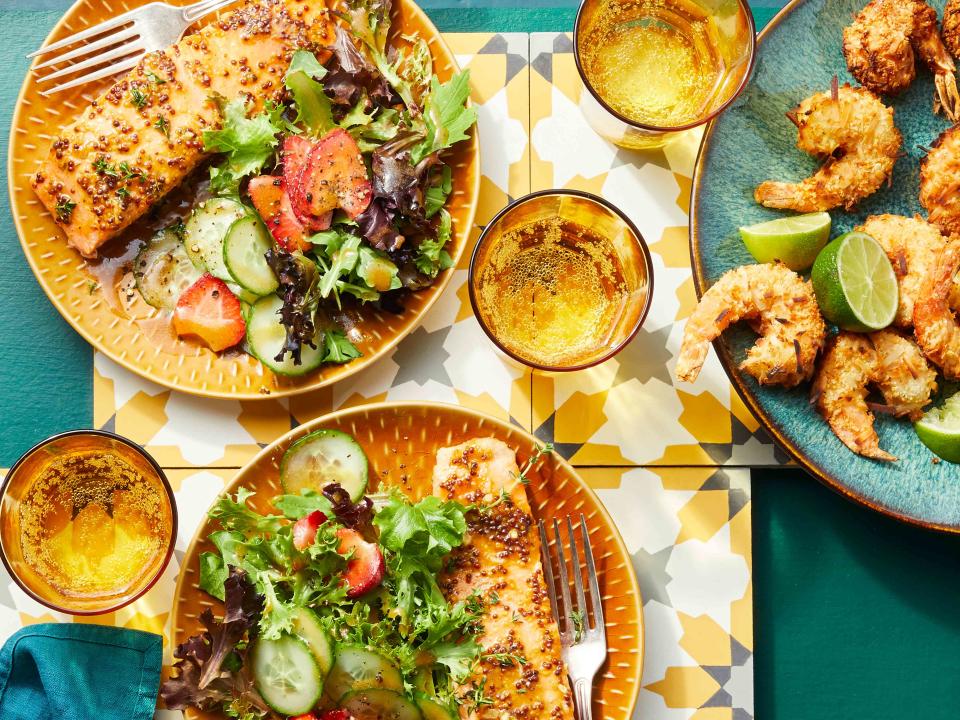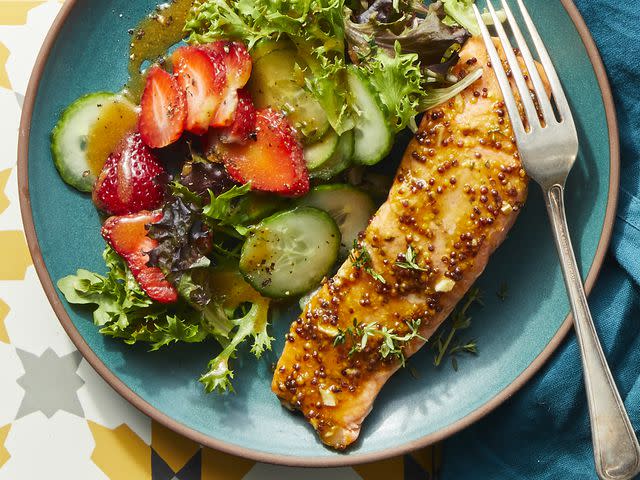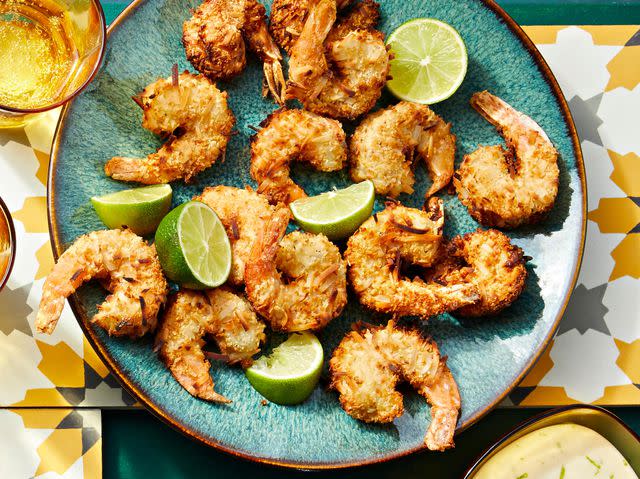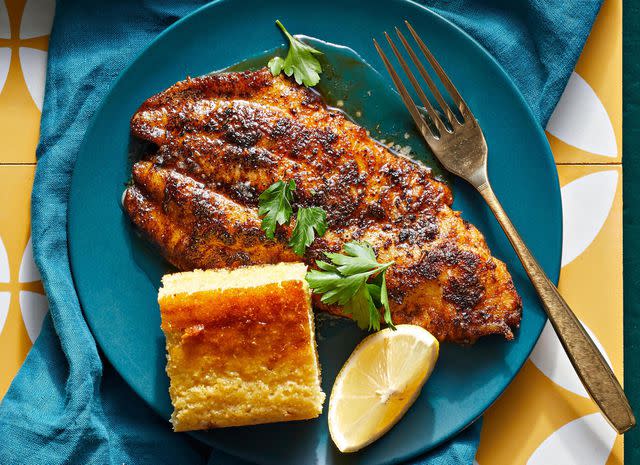Hook, Line & Freezer: Our Favorite Seafood Recipes to Cook from Frozen
From salmon to teeny-tiny bay scallops, we've got your next affordable dinner covered.

Allrecipes Magazine
Dive into your grocery store’s frozen food aisles and fish out affordable, high-protein seafood. Quick-cooking fish, scallops, and shrimp are convenient frozen assets to get you one step closer to dinner tonight.

Maple Mustard Salmon
A quick roast at high heat is one of the breeziest ways to cook salmon. Stir together a tangy stone-ground mustard glaze and brush it over the fillets: You'll be done with prep before the oven finishes preheating.
Fast Fact: Depending on the variety, salmon ranges in color from light pink to red-orange, and in texture from tender to firm. Its rich, buttery taste—thanks to good-for-you Omega-3s—makes this cold-water fish a favorite.

Dotdash Meredith Food Studios
Air Fryer Coconut Shrimp
You’ll have to work in batches to make this crunchy appetizer, but each batch only takes 5 minutes. Keep cooked batches in a warm oven (175° to 200°F) until ready to serve. No air fryer? No problem! Bake shrimp on a rimmed baking sheet at 400°F until golden brown, about 4 minutes on each side.
Fast Fact: These small crustaceans have flesh that’s briny and sweet. If you buy shrimp with their soft shells on, peel and reserve the shells to add flavor to sauces and broths.

Dotdash Meredith Food Studios
Chef John's Brazilian Fish Stew
Brazilian moqueca, a seafood stew with a spice level that varies by region, inspired this recipe. Its flavor builds with an onion-tomato base, gets enriched with creamy coconut milk and peppers, and finishes with quick-to-cook sea bass.
Fast Fact: A tender, buttery, and subtly sweet white fish, sea bass is found in warm sea waters. The name “sea bass” applies to several varieties in this family of fish.

Dotdash Meredith Food Studios
Blackened Catfish
A super-hot cast iron skillet flash-fries and seals in spicy flavor. The spices will smoke as they blacken, so be sure to turn on the hood, open a window, or take the cooking outside.
Fast Fact: The majority of farmed catfish is raised in the Southern United States. The freshwater fish has a clean taste and mellow sweetness and is low in saturated fat.

Dotdash Meredith Food Studios
Creamy Bay Scallop Spaghetti
Teeny-tiny bay scallops are quick to thaw—and even faster to cook. To avoid overcooking them, boil the pasta and have all the remaining ingredients measured and prepped before you start searing the scallops.
Fast Fact: These tiny sweet mollusks thrive on North America’s eastern coast. Select dry-packed (rather than wet-packed) for the purest taste and tenderness.

Dotdash Meredith Food Studios
Steamed Fish with Ginger
Steaming is a great technique for lean halibut—the steam gently cooks the fish without drying it out. Look for dark soy sauce at Asian markets: It’s aged longer than regular soy sauce, and has a deep, less-salty flavor with a hint of sweetness.
Fast Fact: Part of the flounder family, halibut is a lean fish with bright white, firm, and flaky meat. It has a mild taste that pairs well with bold flavors.
Tips for Buying & Thawing Frozen Seafood
Nicely Iced: For freshness sans freezer burn, choose flash-frozen seafood and opt for individually vacuum-sealed fillets. Look for a green seal from the Aquaculture Stewardship Council, which assesses quality and certifies that farms are environmentally and socially responsible. For wild-caught fish (frozen or fresh), visit seafoodwatch.org for advice on sustainable choices.
Smart Thawing: For optimal texture and taste, frozen fish and seafood should be thawed before cooking, but it needs to stay very cold (around 38°F) as it thaws. Two ways to get there:
Be Chill, Go Slow: Remove vacuum packaging to allow airflow and prevent bacteria. Thaw in the refrigerator 12 to 24 hours. (Fridge thawing helps the fish retain water. )
Go Cool & Quick: Put unpackaged fish and seafood in a zip-top plastic bag and run a steady stream of cold water over the bag. P.S. Don’t defrost in the microwave; it can cause uneven thawing.

